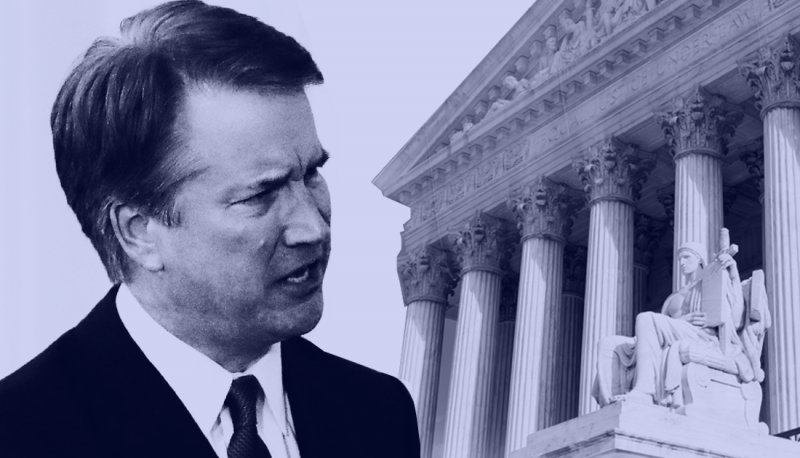Democratic Leader Sen. Chuck Schumer of New York has called Supreme Court nominee Brett Kavanaugh “the Zelig of young Republican lawyers,” referring to Woody Allen’s 1983 titular chameleon known for taking on the characteristics of those around him. Democratic Whip Sen. Dick Durbin of Illinois compared Kavanaugh to “Forrest Gump,” a nod to the 1994 Oscar-winning film and the 1986 Winston Groom novel on which it is based that put an unassuming character at the center of the most pivotal moments in twentieth century history. Indeed, Kavanaugh’s legal resume between clerking and becoming a judge reads like a Who’s Who of the GOP and a decade of partisan political battles. It’s no wonder that President Trump is counting on him to follow the party line if confirmed to join Justice Neil Gorsuch on the Court.
Following his early 90s clerkship for Supreme Court Justice Anthony Kennedy, Kavanaugh went to work for Independent Counsel Ken Starr, with responsibility, among other things, for investigating the circumstances surrounding Vince Foster’s suicide and President Bill Clinton’s relationship with Monica Lewinsky. Kavanaugh didn’t just help Starr investigate Clinton but was a lead author of the infamous Starr Report—widely criticized as “strain[ing] credulity” and being based on “shaky allegations”—that eventually lead to Clinton’s impeachment. One fellow lawyer suggested that Kavanaugh took on the Clinton role because “[t]hat was slime time. He wanted to be there for the kill.”
Close on the heels of their Clinton impeachment crusade, Republicans fought hard to put the Bushes back in the White House. The stalemate election of November 7, 2000 finally ended more than a month later with Bush v. Gore when the Supreme Court effectively handed the presidential win to George W. Bush and the loss to “the nation’s confidence in the judge as an impartial guardian of the rule of law.” In private practice by then, Kavanaugh helped make this possible as one of Bush’s lawyers.
Kavanaugh returned to public service in the early 2000s and helped select and support some of President Bush’s most far-right judicial nominees as the right-hand man to then White House Counsel Alberto Gonzales. Kavanaugh is said to have championed Priscilla Owen’s Fifth Circuit confirmation. Just this year, Owen defended the improper sentencing of an immigrant convicted of unlawful reentry. Kavanaugh is also tied to failed D.C. Circuit nominee Miguel Estrada, who was filibustered seven times before his troubling right-wing record finally forced him to withdraw from consideration.
As Kavanaugh’s White House service neared its end, Terri Schiavo’s story went from a painfully personal family moment to a Florida headline to a vicious, public battle championed by the Republican Party and the far Right. Schiavo died in hospice care on March 31, 2005 when her feeding tube was removed after more than a decade in a persistent vegetative state. Kavanaugh is said to be the one who woke President Bush so that he could sign off on congressional intervention aimed at putting the tube back in.
After a nearly three-year Senate battle, Kavanaugh was confirmed to the D.C. Circuit on May 26, 2006.
